★ Water = Rural Livin’ Success
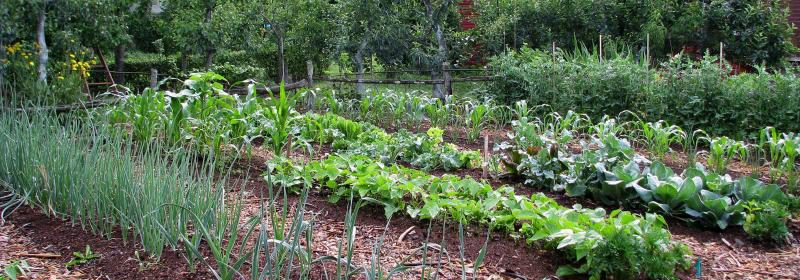
A reliable water source is the single most important consideration for any homestead’s success. One’s survival and the success of your property will depend on a safe, adequate overabundance of reliable water. If you are considering a market garden or animals, adequate water is a must, especially if there is any potential of facing a drought. Let’s go over some average homestead water supply requirements and also how one can prepare for and provide for those needs.
Homestead Water Supply Requirements
The average indoor daily water consumption per person is approximately 350 litres ( 95-gallons ) or 1,220 litres ( 240-gallons ) for a family of four. Let’s break this down even further:
- The Dishes. Each time you wash the dishes, you may use 40-litres of water ( 10-gallons of water ). On average, one washes the dishes three times a day, if someone is home all day ( 120-litres or 30-gallons of water ).
- The Laundry. Each time you wash a load of laundry, you may use 95-litres of water ( 25-gallons ). On average, you may wash two loads of laundry per day ( 190-litres or 50-gallons of water ).
- A Shower. Each time you take a shower ( slow-flow showerhead ), you may use 150-litres of water ( 40-gallons ). A four member family will use 600-litres of water per day ( 160-gallons ).
- Going to the Toilet. Each time you flush the toilet, you may use 14-litres of water ( 4-Gallons ). Your daily use may be 75-litres of water per day ( 20-gallons ). For a family of four you may use 300-liters ( 80-gallons of water per day ).
- Drinking Water. There are many different theories as to how much water one should be drinking on a daily basis. Generally speaking, health authorities commonly recommend one 750-milliletres or 8oz glass of water 8-times per day. This equates to about 2-liters of water per day per person ( half a gallon ). A family of four may consume 8-liters or 2-gallons per day.
- Watering the Vegetable Garden. If a family maintains a quarter-acre garden for personal use, then it is likely one may use 1,350-liters of water per day ( 350-gallons ).
This is just a loose estimate at approximately 2,500-liters of water per day ( 880 gallons ) for a family of four ( including a good sized garden ). The initial estimate of 350 litres ( 95-gallons ) for an individual or 1,220 litres ( 240-gallons ) for a family of four is a rough estimate of inside usage only.
The annual water usage for a four-family family is estimated at 920,000-liters of water ( 244,000-gallons ).
You could drastically reduce the family’s water consumption by taking short 10-minute showers and less often, using water-saving devices such as low-flow showerheads, composting toilets, and energy efficient washing machines. Anything and everything must be considered if water is at a premium.
Now that you have these family usage facts, it time to turn to the other needs of your growing homestead. If you add your livestock, a market garden or orchards, then the demands for water will increase expeditiously. A quarter-acre garden will require two hours of watering at about 1,350-liters a day ( 300-gallons ).
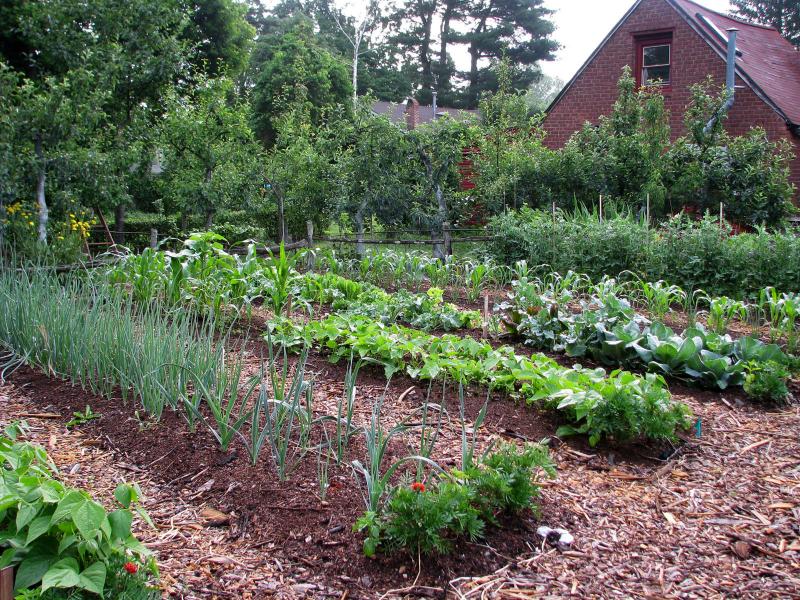 A market garden will demand much more. You can reduce this usage of water used to irrigate your garden, around fruit trees and vineyards by installing a drip irrigation system. Mulching also assists in water retention and reducing evaporation, preserving the use of water. It is also important to consider catchment systems such as a house, barn or shed’s roof to collect rain water. Catchment systems are vital in drier climates. A large cistern or dam ( stock-pond ) can greatly alleviate your water woes and allow ample opportunity to maintain a thriving homestead with gardens and livestock.
A market garden will demand much more. You can reduce this usage of water used to irrigate your garden, around fruit trees and vineyards by installing a drip irrigation system. Mulching also assists in water retention and reducing evaporation, preserving the use of water. It is also important to consider catchment systems such as a house, barn or shed’s roof to collect rain water. Catchment systems are vital in drier climates. A large cistern or dam ( stock-pond ) can greatly alleviate your water woes and allow ample opportunity to maintain a thriving homestead with gardens and livestock.
There are resources online to assist in calculating roof area and annual rainfall to estimate rainfall collection volumes ( http://www.calctool.org/CALC/other/default/rainfall )
These considerations and others must be factored in when calculating the amount of water needed annually. Does your annual rainfall run-off collection system, a well, a spring, your dam, or the economic cost of trucking in so much water justify where you live?
Ways to Provide Water on Your Homestead Property
There are any number of water sources a homestead could utilise. The best case scenario would be to have an independent water source such as a cistern rain catchment system, spring, drilled or dug well, river, lake, stream. But, if you are forced to, or desire, and if your finances allow, then water delivery by truck into a large water tank is also an option.
Rainwater Catchment or Harvesting Dry System
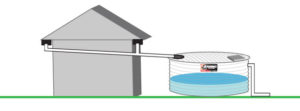 Rainwater is collected from house, garage, sheds, workshops and farm equipment rooftops, through downpipes feeding directly into a large tank or tanks. This catchment system is called a rainwater catchment dry system as the downpipes run dry after the rain has stopped.
Rainwater is collected from house, garage, sheds, workshops and farm equipment rooftops, through downpipes feeding directly into a large tank or tanks. This catchment system is called a rainwater catchment dry system as the downpipes run dry after the rain has stopped.
Rainwater Catchment or Harvesting Wet System
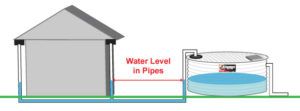 This rainwater catchment system allows for the rainwater storage tank or tanks to be
This rainwater catchment system allows for the rainwater storage tank or tanks to be
positioned further away from the water collection source and uses the principal that water will always find a level. The pipes remain ‘charged’ so when it rains the water will spill over into the tank.
Rainwater Catchment or Harvesting Transfer System
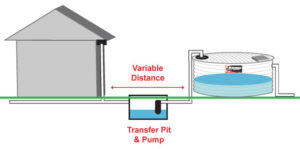 This rainwater catchment system allows the rainwater storage tank or tanks to be positioned anywhere on the property with an automatic transfer pump from the underground pit to the tank or tanks. The transfer pit pump can be powered by a renewable power source, such as solar, wind, or a hydro system.
This rainwater catchment system allows the rainwater storage tank or tanks to be positioned anywhere on the property with an automatic transfer pump from the underground pit to the tank or tanks. The transfer pit pump can be powered by a renewable power source, such as solar, wind, or a hydro system.
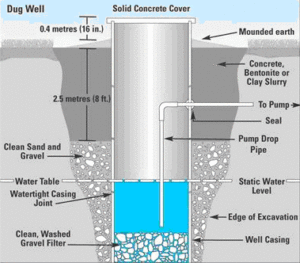 Dug Well. Traditionally, dug wells were made by hand and lined with stones, but today the work of digging a well is usually done by a backhoe or excavator. Dug wells can only be created in soil — they’re typically 24 to 36 inches in diameter and usually less than 30 feet deep. Tubular concrete well-tiles keep soil and surface water out of the hole.
Dug Well. Traditionally, dug wells were made by hand and lined with stones, but today the work of digging a well is usually done by a backhoe or excavator. Dug wells can only be created in soil — they’re typically 24 to 36 inches in diameter and usually less than 30 feet deep. Tubular concrete well-tiles keep soil and surface water out of the hole.
Bored wells are similar to dug wells, except they’re created by specialised equipment that augers a round hole into the soil. This lets bored wells extend from 30 all the way to 100 feet deep, and the boring operation is less disruptive to the surrounding landscape. Bored wells also use concrete well-tiles to keep surface water, dirt and critters out of the hole.
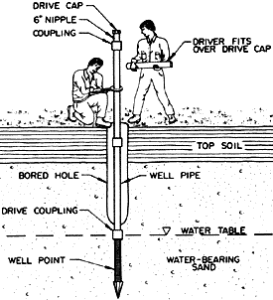 Driven wells are made by fitting a sharp, rigid, screened attachment (called a “sand point”) onto the end of rigid steel pipe. The sand point allows a pipe to be pounded into the ground for extracting groundwater from abundant, shallow sources in coarse and sandy soils. Sand points are usually the simplest and cheapest option for creating a well, but they work only if hydrogeological conditions are ideal, in which case a driven well can extend to depths of 30 (hand-driven) or even 50 feet or more (driven by weighted hammers).
Driven wells are made by fitting a sharp, rigid, screened attachment (called a “sand point”) onto the end of rigid steel pipe. The sand point allows a pipe to be pounded into the ground for extracting groundwater from abundant, shallow sources in coarse and sandy soils. Sand points are usually the simplest and cheapest option for creating a well, but they work only if hydrogeological conditions are ideal, in which case a driven well can extend to depths of 30 (hand-driven) or even 50 feet or more (driven by weighted hammers).
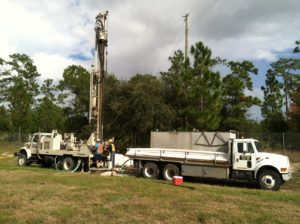 Drilled wells are typically drilled to a depth of at least seven and a half meters deep ( 25 feet ), small in diameter, about 10-20cm ( 4-8 inches ), and the only option for getting water from bedrock. Drilled wells include a metal tube (called a “casing”) pushed partway down into the hole and extending several feet above the surface of the hole to keep out surface water and dirt that can cause decontamination of the water.
Drilled wells are typically drilled to a depth of at least seven and a half meters deep ( 25 feet ), small in diameter, about 10-20cm ( 4-8 inches ), and the only option for getting water from bedrock. Drilled wells include a metal tube (called a “casing”) pushed partway down into the hole and extending several feet above the surface of the hole to keep out surface water and dirt that can cause decontamination of the water.
Get Clean Drinking Water
As the manager of your own private water system, you’re responsible for safety testing to ensure you have clean drinking water. Experts recommend lab analysis of water samples twice a year — in spring and fall — with additional tests whenever you notice changes in appearance or smell. Regardless of the tests available where you live, collecting water samples properly is key.
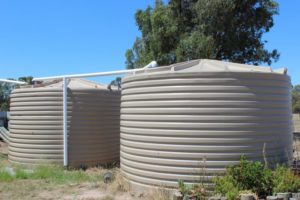 Start with an approved bottle containing a stabilising agent in pellet or powder form. Remove any screen, hose or filter from the collection tap, and then let the water run for two minutes before filling the bottle. Don’t let anything touch the inside of the bottle cap by holding the cap face down while the bottle is filling. You want to avoid any type of decontamination that may result in a false reading / test. Refrigerate your sample right away, and have it analysed within two days.
Start with an approved bottle containing a stabilising agent in pellet or powder form. Remove any screen, hose or filter from the collection tap, and then let the water run for two minutes before filling the bottle. Don’t let anything touch the inside of the bottle cap by holding the cap face down while the bottle is filling. You want to avoid any type of decontamination that may result in a false reading / test. Refrigerate your sample right away, and have it analysed within two days.
You must also ensure your well doesn’t introduce contamination into underground aquifers. In its natural state, groundwater is usually pure. 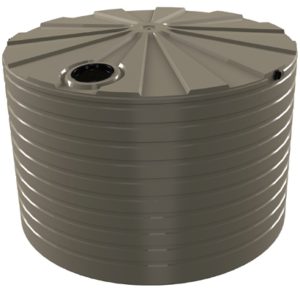 The continued purity of groundwater depends on the time surface water spends percolating down through the earth. That’s why any situation that lets surface water drain immediately into the aquifer, either around or through existing wells, leads to trouble. This danger is the reason responsible governments police allowable methods of constructing a well. Created properly, wells are the only source of nonmunicipal water with the potential to be safe without the need for ongoing sterilisation via chlorination or UV treatment.
The continued purity of groundwater depends on the time surface water spends percolating down through the earth. That’s why any situation that lets surface water drain immediately into the aquifer, either around or through existing wells, leads to trouble. This danger is the reason responsible governments police allowable methods of constructing a well. Created properly, wells are the only source of nonmunicipal water with the potential to be safe without the need for ongoing sterilisation via chlorination or UV treatment.
As good as wells are, they’re not always the best option. Wells can be expensive to create, and sometimes, in penetrating down to usable amounts of water, wells encounter naturally occurring minerals that cause unpleasant water taste, odour or appearance. Those are a few of the reasons why some people choose to develop surface water sources such as lakes, rivers and springs.
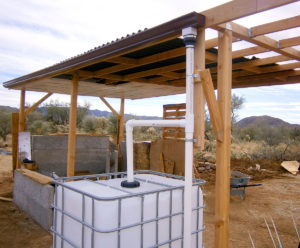 Surface water sources are often abundant, but they’re also vulnerable to contamination, which is why water authorities everywhere consider it essential to treat water from surface sources even if it tests as safe.
Surface water sources are often abundant, but they’re also vulnerable to contamination, which is why water authorities everywhere consider it essential to treat water from surface sources even if it tests as safe.
You’ll also typically have to invest in filters to remove coarse sediments that aren’t present in well-water. In cold climates, tapping into surface water sources year-round can also pose a challenge when it comes to keeping water intake lines from freezing. Even if your property includes a productive well, developing any surface water resources you have for less exacting uses — such as irrigation, livestock or washing vehicles — makes sense.